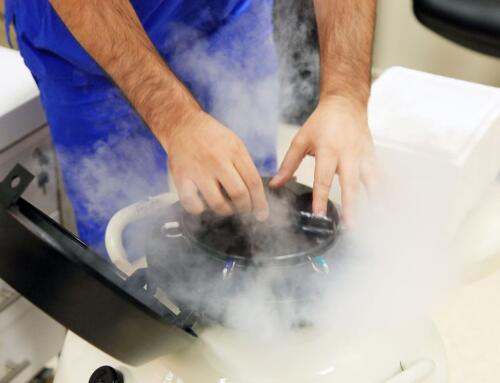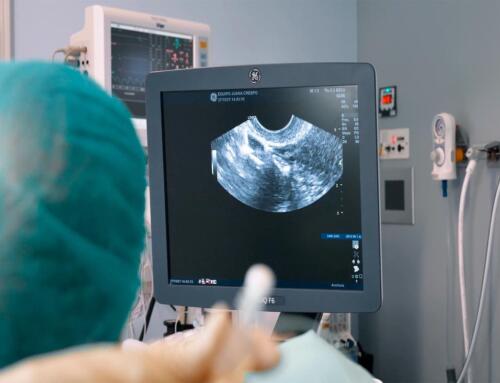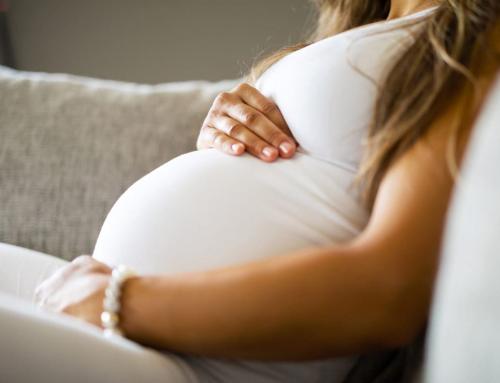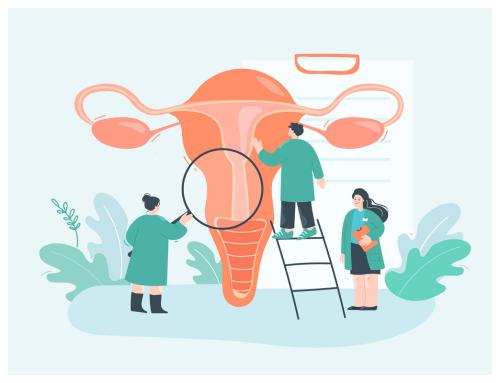Although today cesarean section is considered a safe procedure, it is still a surgical intervention whose consequences can affect future pregnancies, with a greater possibility of developing complications such as placenta previa, placental accretism, implantation of the pregnancy in the scar or uterine rupture.
Gynecological problems such as abnormal uterine bleeding, dyspareunia and abdominal pain may also occur after cesarean section.
When the bleeding occurs between menses, there may be cesarean scarring problems such as isthmocele.
What is Isthmocele?
Isthmocele is a defective healing of the cut made after cesarean delivery that leaves a saculation or pseudo-pouch at the surgical suture.
It gets its name from the place where it gets formed, the uterine isthmus, located between the cervical canal and the internal os, at the cervical end of the lower-posterior part of the uterus.
Although it can be asymptomatic and many women are not aware that they have this internal problem, the rise in the number of cesarean sections in recent years has also increased the diagnoses of isthmocele.
According to some studies, this complication appears in 25-30% of cases after a first cesarean section, a percentage that rises considerably in women who have had two or more cesarean sections.
What is the relationship between isthmocele and hysterotomy?
Isthmocele is a pathology of scarring after a hysterotomy (surgical opening of the uterus in a cesarean section).
The relationship between isthmocele and hysterotomy is binding, since, for the former to occur, there must be a surgical antecedent of obstetric cesarean section.
Regarding its origin, it is unknown, although there are studies that relate the appearance of isthmocele with the number of previous cesarean sections of the woman.
Other causes may be:
- Surgical technique, material and type of suture used for hysterectomy.
- Difference in size between the anterior and posterior border of the cesarean surgical wound.
- Position of the uterus.
- Isthmocele: symptoms that can help you identify it
Isthmocele is considered a late complication of childbirth, since it affects maternal health after cesarean section and its effects show after a few weeks.
Of all the effects, the most notable would be the alteration of the inner lining of the uterus, the endometrium, which causes problems such as bleeding between periods.
In fact, the isthmocele shows as a dark-colored pouch, at the level of the cesarean section, where menstrual blood can accumulate, which then causes atypical losses (hypermenorrhea and dysmenorrhea), abdominal pain, pelvic pain, pain during sexual intercourse, etc.
Isthmocele as a cause of secondary infertility
From a clinical point of view, isthmocele is a saculation located in the anterior uterine wall, just in the area where the scar from a previous cesarean section is located.
Its main consequence, as we have already explained, is abnormal bleeding: the sac formed acts as a reservoir that hinders the outflow of menstrual flow, increases local vascularization and alters uterine contractility.
Isthmocele has also been associated with cases of secondary infertility for several reasons:
First, because persistent menstrual flow can negatively affect cervical mucus, interfering with sperm transport and hindering sperm penetration.
On the other hand, hematometra (i.e. when menstruation, blood or uterine lochia are not properly evacuated through the cervix and vagina) can cause problems in the implantation of the embryo.
Can I get pregnant again? Hysteroscopic surgery for isthmocele
Some women who suffer from this complication after a cesarean section wonder if they can become pregnant again.
If it is mild, the isthmocele is treated pharmacologically: estrogen-progestin hormone therapy is administered to regulate menstrual flow and restore the endometrium.
If this treatment does not work, surgical correction may be indicated, although it is only recommended in cases of clinical symptomatology or when there is no other cause that can be related to the problems in conceiving.
The first step is to make a diagnosis of the size of the isthmocele and its area thanks to imaging techniques such as endovaginal ultrasound.
Normally, a hysteroscopic resection will be chosen.
Hysteroscopic surgery of isthmocele is a minimally invasive technique that allows direct intervention in the cavity of the uterus by inserting a small instrument to remove the “edges” of the sac, aligning them with the surrounding tissue, and to coagulate the surgical site.
If the defect is wide and very deep, surgical correction can be performed by laparoscopy with suturing.
Depending on the surgical approach, it is recommended to wait between 3 and 6 months to seek a new pregnancy, either naturally or by IVF, in order to ensure the healing of the area, which will be controlled.
Turn to your team of trusted professionals
The basis of the success of any reproductive surgery is to restore the functionality of an organ that, due to different pathologies, has been rendered useless.
This requires a team of experienced professionals who know the best assisted reproduction techniques and treatments.
In Equipo Juana Crespo we are experts in techniques to restore fertility such as hysteroscopy, which allows us to diagnose and treat lesions such as abnormal bleeding, diseases of the uterus, causes of miscarriages, polyps, fibroids and other conditions that hinder embryo implantation. Call us!
















